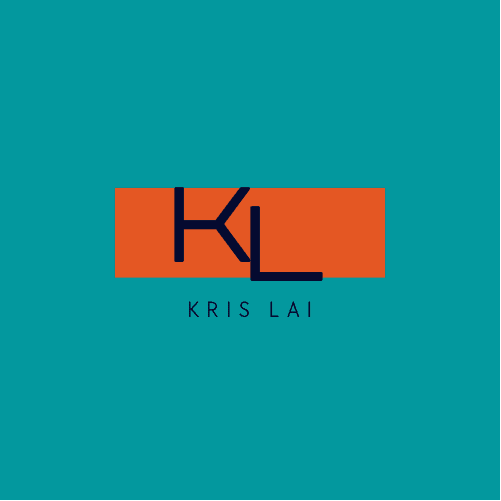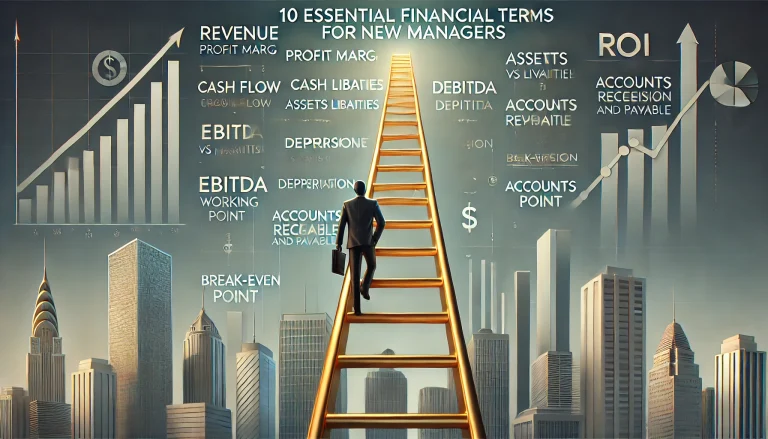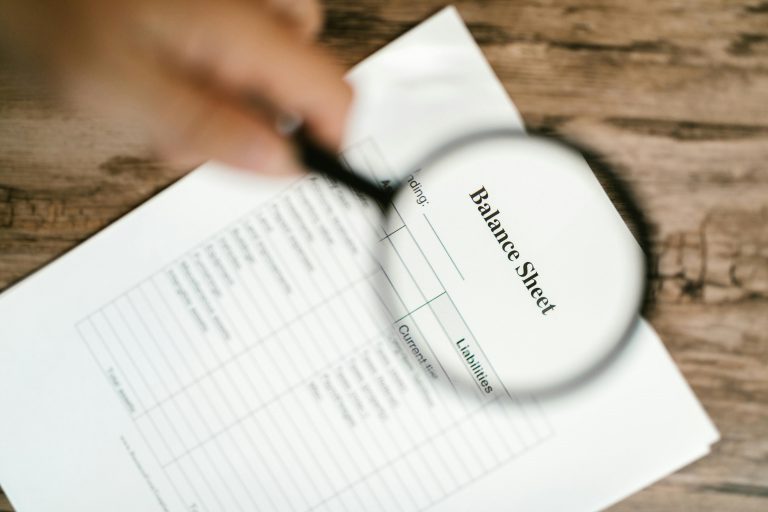In the intricate world of finance, the balance sheet stands as a cornerstone of business acumen. Yet, for many, it remains an enigmatic document, filled with numbers and terms that seem to speak a language all their own.
Disclosure: If you click on my affiliate/advertiser’s links, I am going to receive a tiny commission. AND… Most of the time, you will receive an offer of some kind. It’ s a Win/Win!
Imagine standing at the helm of a ship, navigating treacherous waters without a map or compass. That’s precisely how it feels to run a business without understanding how to read a balance sheet. It’s not just about staying afloat; it’s about charting a course to financial success.
But fear not, intrepid business leader. Today, we’re about to start on a journey that will transform you from a balance sheet novice to a financial statement virtuoso. By the end of this comprehensive guide on how to read a balance sheet, you’ll possess the skills to decipher the financial health of any company at a glance.
Whether you’re an aspiring entrepreneur, a seasoned manager, or simply someone looking to enhance their financial literacy, understanding the balance sheet is your ticket to making informed decisions and driving business growth. It’s the difference between shooting in the dark and making calculated moves in the high-stakes game of business.
So, are you ready to unlock the secrets hidden within those columns of numbers? Let’s dive into the art and science of how to read a balance sheet, and equip you with the knowledge to navigate the financial seas with confidence and clarity.
I have split the subject into 10 different sections so that it will hopefully be easier, and less confusing, to understand the different aspect of reading a balance sheet. I will also, in different ways, highlight the importance of understanding the various functions of a balance sheet accurately. These 10 sub points are, as follows:
1. Decoding the Balance Sheet: An Overview of Its Structure
2. Assets Unveiled: Understanding What a Company Owns
3. Liabilities Explained: Grasping What a Company Owes
4. Shareholder’s Equity: The Company’s Net Worth Revealed
5. The Balance Sheet Equation: Ensuring Everything Adds Up
6. Current vs. Non-Current: Classifying Assets and Liabilities
7. Ratios and Analysis: Extracting Insights from the Balance Sheet
8. Common Balance Sheet Red Flags: What to Watch Out For
9. Industry Specifics: How Balance Sheets Vary Across Sectors
10. Practical Tips: Mastering the Art of Balance Sheet Interpretation
So, so let’s go into it, starting with the first point, namely…
1. Decoding the Balance Sheet: An Overview of Its Structure
Understanding how to read a balance sheet begins with grasping its basic structure. A balance sheet is a financial statement that provides a snapshot of a company’s financial position at a specific point in time. It’s divided into three main sections: assets, liabilities, and shareholders’ equity.
When learning how to read a balance sheet, it’s crucial to remember that it always balances—hence the name. The total assets must equal the sum of liabilities and shareholders’ equity. This fundamental principle is the cornerstone of double-entry bookkeeping.
Misinterpreting the balance sheet’s structure can lead to serious misjudgements about a company’s financial health. For instance, failing to recognise that a large asset base doesn’t necessarily indicate financial strength if it’s offset by equally large liabilities could lead to poor investment decisions or misguided business strategies.
2. Assets Unveiled: Understanding What a Company Owns
When learning how to read a balance sheet, understanding assets is crucial. Assets are resources owned by the company that have economic value and are expected to provide future benefits. They’re typically listed in order of liquidity, from most liquid (like cash) to least liquid (like buildings or equipment).
Assets on a balance sheet are categorised into current assets (expected to be converted into cash within a year) and non-current assets (long-term investments). Examples of current assets include cash, accounts receivable, and inventory, while non-current assets might include property, plant, and equipment.
Failing to accurately assess a company’s assets can lead to overestimation of its value or liquidity. For instance, if a significant portion of assets is tied up in inventory that’s becoming obsolete, the company’s financial position might be weaker than it appears at first glance. Understanding how to read a balance sheet properly helps avoid such misconceptions.
3. Liabilities Explained: Grasping What a Company Owes
Liabilities are a critical component when learning how to read a balance sheet. They represent the company’s financial obligations or debts. Like assets, liabilities are categorised as current (due within one year) or non-current (long-term obligations).
Current liabilities might include accounts payable, short-term debt, and the current portion of long-term debt. Non-current liabilities typically include long-term loans, bonds payable, and pension obligations. Understanding these distinctions is crucial when assessing a company’s financial health and ability to meet its obligations.
Misinterpreting liabilities can have severe consequences. For example, underestimating the impact of a large long-term debt could lead to cash flow problems or even bankruptcy if not managed properly. Knowing how to read a balance sheet accurately helps in identifying potential financial risks and making informed decisions about a company’s debt management strategies.
4. Shareholder’s Equity: The Company’s Net Worth Revealed
Shareholder’s equity, also known as owner’s equity or net assets, is a key element when learning how to read a balance sheet. It represents the residual interest in the assets of the company after deducting liabilities. In essence, it’s what would be left for shareholders if all assets were liquidated and all debts paid off.
This section of the balance sheet typically includes share capital (the amount invested by shareholders), retained earnings (accumulated profits not distributed as dividends), and other comprehensive income. Understanding shareholder’s equity is crucial for assessing a company’s financial stability and the return on shareholders’ investments.
Misinterpreting shareholder’s equity can lead to flawed assessments of a company’s value. For instance, a negative shareholder’s equity might indicate that a company’s liabilities exceed its assets, potentially signalling financial distress. Knowing how to read a balance sheet correctly helps in identifying such red flags and making informed investment or management decisions.
5. The Balance Sheet Equation: Ensuring Everything Adds Up
The balance sheet equation is the foundation of how to read a balance sheet. It states that Assets = Liabilities + Shareholders’ Equity. This equation must always balance, hence the term “balance sheet”. Understanding this principle is crucial for verifying the accuracy of financial statements and grasping the relationship between a company’s resources, obligations, and ownership interests.
For example, if a company takes out a £100,000 loan, its cash (an asset) increases by £100,000, and its liabilities also increase by £100,000. The equation remains balanced. This principle applies to all transactions, no matter how complex.
Failing to grasp this fundamental concept can lead to misinterpretation of financial data. If the balance sheet doesn’t balance, it’s a clear sign of accounting errors or potential fraud. Knowing how to read a balance sheet and verify its accuracy is essential for maintaining financial integrity and making sound business decisions.
6. Current vs. Non-Current: Classifying Assets and Liabilities
When learning how to read a balance sheet, understanding the distinction between current and non-current items is crucial. Current assets and liabilities are those expected to be converted to cash or paid within one year, while non-current items have a longer time frame.
Current assets might include cash, accounts receivable, and inventory, while non-current assets could be property, equipment, or long-term investments. Similarly, current liabilities might be accounts payable or short-term debt, while non-current liabilities could include long-term loans or pension obligations.
Misclassifying these items can severely distort a company’s perceived financial health. For instance, classifying a short-term loan as non-current could make a company appear more liquid than it actually is, potentially leading to cash flow problems. Proper understanding of how to read a balance sheet helps in accurately assessing a company’s short-term solvency and long-term financial stability.
7. Ratios and Analysis: Extracting Insights from the Balance Sheet
Once you’ve learned how to read a balance sheet, the next step is using it to calculate financial ratios. These ratios provide valuable insights into a company’s liquidity, solvency, and efficiency. Common ratios derived from the balance sheet include the current ratio (current assets / current liabilities), debt-to-equity ratio, and asset turnover ratio.
For example, a current ratio below 1 might indicate potential liquidity problems, as the company may not have enough current assets to cover its short-term obligations. The debt-to-equity ratio helps assess a company’s financial leverage and risk.
Failing to analyse these ratios can lead to missed opportunities or overlooked risks. A company might appear healthy based on its total assets, but ratio analysis could reveal unsustainable debt levels or poor asset utilisation. Mastering how to read a balance sheet and derive these insights is crucial for comprehensive financial analysis.
8. Common Balance Sheet Red Flags: What to Watch Out For
As you become proficient in how to read a balance sheet, it’s important to recognise potential red flags. These warning signs can indicate financial distress or questionable accounting practices. Some common red flags include rapidly increasing debt levels, consistent decreases in cash balances, or sudden, unexplained changes in asset or liability accounts.
For instance, if accounts receivable is growing much faster than sales, it could indicate problems with collecting payments from customers. Similarly, a sharp increase in inventory without a corresponding increase in sales might suggest obsolescence issues.
Overlooking these red flags can have severe consequences, potentially leading to investment losses or business failures. By understanding how to read a balance sheet effectively, you can spot these warning signs early and take appropriate action, whether that’s conducting further investigation or making strategic changes to address the underlying issues.
9. Industry Specifics: How Balance Sheets Vary Across Sectors
When learning how to read a balance sheet, it’s important to recognise that balance sheet structures can vary significantly across different industries. For example, a manufacturing company might have substantial inventory and fixed assets, while a software company might have minimal inventory but significant intangible assets like patents or software development costs.
Financial institutions have very different balance sheets, with loans forming a major part of their assets and customer deposits as a significant liability. Retail companies often have large amounts of inventory and, potentially, significant lease liabilities.
Failing to account for these industry-specific nuances can lead to misinterpretation of a company’s financial position. What might be a red flag in one industry could be perfectly normal in another. Mastering how to read a balance sheet includes understanding these sector-specific variations, enabling more accurate comparisons and analyses across different companies and industries.
10. Practical Tips: Mastering the Art of Balance Sheet Interpretation
To truly master how to read a balance sheet, practice and attention to detail are key. Start by regularly reviewing balance sheets of various companies, comparing them over time and across industries. Pay attention to the notes accompanying financial statements, as they often provide crucial details about accounting methods and breakdowns of major categories.
Consider using visualisation tools to help interpret the data. For instance, creating charts to show the composition of assets or liabilities can make trends and proportions more apparent. Also, always cross-reference the balance sheet with other financial statements like the income statement and cash flow statement for a comprehensive view.
Remember, knowing how to read a balance sheet is more than just understanding the numbers—it’s about telling the story behind those numbers. By consistently applying these skills and staying curious about the underlying business realities, you’ll develop an invaluable financial acumen that can drive better decision-making and business success.
So, what have we learned?
Conclusion: From Balance Sheet Novice to Financial Maestro – Your Journey Begins Here
As we conclude our deep dive into the art of balance sheet interpretation, it’s clear that this financial statement is far more than a mere collection of numbers. It’s a powerful tool that, when wielded with skill and understanding, can unlock insights into a company’s financial health, operational efficiency, and future prospects. By mastering how to decipher this crucial document, you’ve taken a significant step towards enhancing your financial acumen and business leadership skills.
We’ve journeyed through the structure of the balance sheet, unravelling the mysteries of assets, liabilities, and shareholders’ equity. We’ve explored the critical balance sheet equation, delved into the nuances of current versus non-current classifications, and uncovered the power of financial ratios. Along the way, we’ve highlighted potential pitfalls and industry-specific variations, arming you with the knowledge to avoid common misinterpretations that could lead to costly mistakes.
But remember, learning how to read a balance sheet is just the beginning of your financial literacy journey. It’s a foundational skill that opens doors to more advanced financial analysis and strategic decision-making. As you continue to hone this skill, you’ll find yourself better equipped to assess investment opportunities, guide your company’s financial strategy, and communicate effectively with stakeholders at all levels.
Now, it’s time to put this knowledge into practice. We encourage you to grab a real balance sheet – perhaps from your own company or a publicly traded corporation you’re interested in – and apply the principles we’ve discussed. Analyse the numbers, calculate some ratios, and try to tell the story behind the figures. The more you practice, the more intuitive this process will become.
But don’t stop here. The world of finance is vast and ever-evolving, and there’s always more to learn. We invite you to return to our blog regularly for more insights on financial management, leadership skills, and business strategy. Whether you’re looking to understand other financial statements, dive deeper into financial ratios, or explore advanced topics like valuation and financial modelling, we’re here to guide you every step of the way.
Take action today: commit to reviewing at least one balance sheet a week. Share your newfound knowledge with your colleagues or mentor. Engage in discussions about financial statements in your workplace. The more you immerse yourself in this world, the more proficient you’ll become.
Remember, great business leaders are those who never stop learning. By dedicating yourself to understanding financial statements like the balance sheet, you’re not just improving your own skills – you’re positioning yourself as a forward-thinking, financially savvy professional who can drive real value in any organisation. So, bookmark our blog, set a reminder to check back for new articles, and continue your journey towards financial mastery. Your future self – and your business – will thank you for it!
Why not continue right here, with these informational articles:
- How Live Shopping Can Skyrocket Your Small Business Sales: The Ultimate Guide to Getting Started
- Turn AI Anxiety into Competitive Advantage: How to Future-Proof Your Workforce for the AI Revolution
- Unlock Profit: Calculate Customer Lifetime Value & Maximize Growth
- Creating a Customer Persona: A Step-by-Step Guide On How To Do It
- Unleashing the Power of Digital Signage: The Best Software to Transform Your Business






